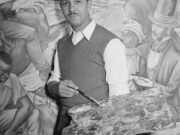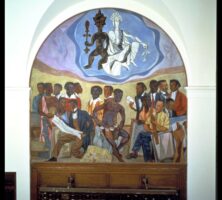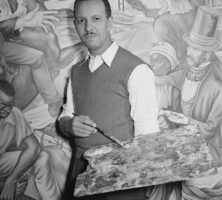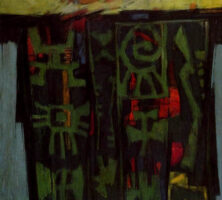Hale Woodruff, a nationally known printmaker, draftsman, and painter, was a member of the Atlanta University faculty for fifteen years. During that time the Paris-trained African American artist developed a distinctive American regionalist style. While teaching at Atlanta University, he was responsible for establishing the university’s art program.
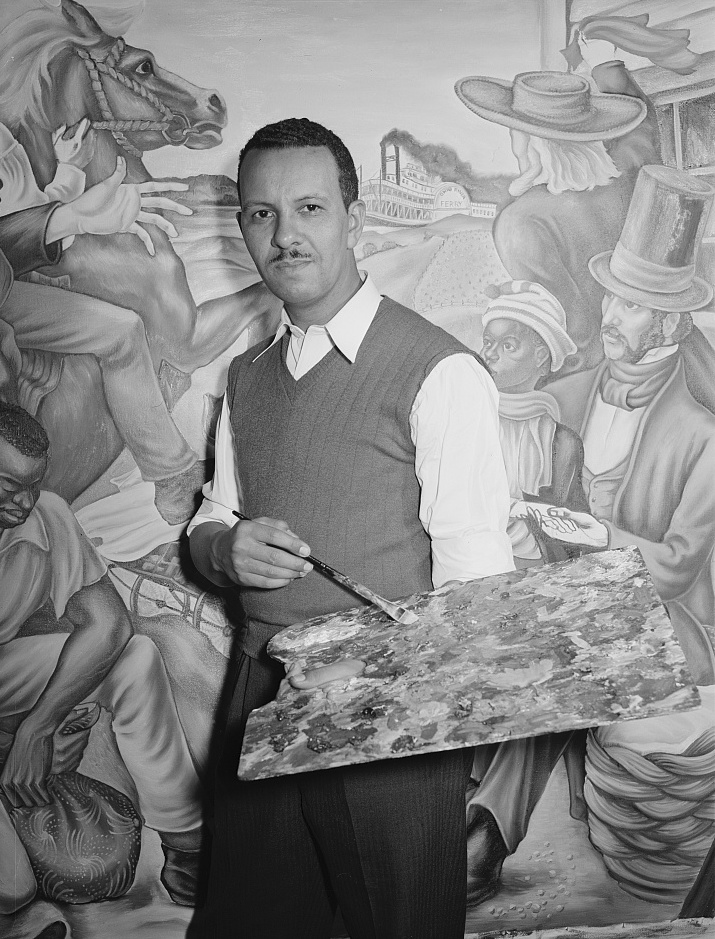
Courtesy of Library of Congress, Prints and Photographs Division
Hale Aspacio Woodruff was born on August 26, 1900, in Cairo, Illinois, to Augusta and George Woodruff. He moved with his mother to Nashville, Tennessee, after his father died. After graduating from Nashville’s Pearl High School, where he had been the cartoonist for the school newspaper, Woodruff studied at the Herron Art Institute in Indianapolis, Indiana.
Upon returning home from a four-year sojourn to France in the 1920s, Woodruff joined the faculty of Atlanta University in 1931. It was his initial venture with art instruction and made him one of the first college professors of studio art in the state of Georgia. In the course of a decade, Woodruff developed a “one-man art department,” promoted a plethora of visual arts activities, and initiated the Atlanta University Art Annuals (1942-70), twenty-nine national art exhibitions for Black artists.
In response to Atlanta University’s “Six-Year Plan” for establishing a School of Music and Fine Arts, Woodruff conducted art classes on the Spelman College campus for Atlanta University’s Laboratory High School and for Spelman and Morehouse College students. Among some of the major exhibitions Woodruff succeeded in bringing to the Atlanta University Center campus were selections from the collection of the Whitney Museum of American Art and works by fifty-four contemporary Black artists sponsored by the Harmon Foundation. The development of Clark Atlanta University’s historic collection of African American art, harvested from the Atlanta University Art Annuals, is wholly attributable to Woodruff’s vision and effort. “The one thing I think that must be guarded against,” he stated in 1968, “is that, in our efforts to create a Black image and to assert our quality, our character, our Blackness, our beauty, and all that, the art form must remain one of high level.”
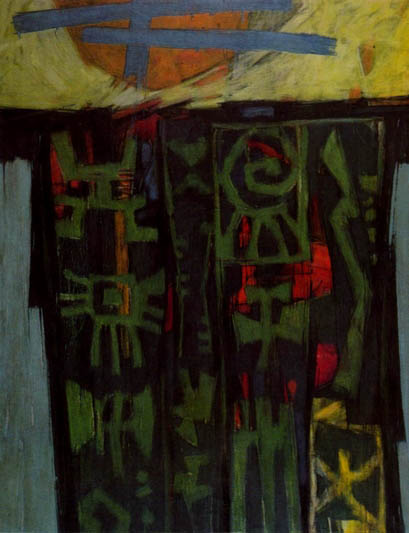
Courtesy of Spelman College Museum of Fine Art
Woodruff’s early work reflects his exposure to cubism while living in France during the late 1920s and early 1930s. The urban and rural landscapes of Georgia inclined his work and that of his students toward the regionalist style popular during that era. As were several other African American artists, Woodruff was inspired by Mexican muralists like Diego Rivera, with whom he studied. He completed three mural series: The Amistad Mutiny for Talladega College, The Negro in California History for the Golden State Mutual Life Insurance Company in California (a collaboration with Charles Alston), and the Art of the Negro at Clark Atlanta University Art Galleries.
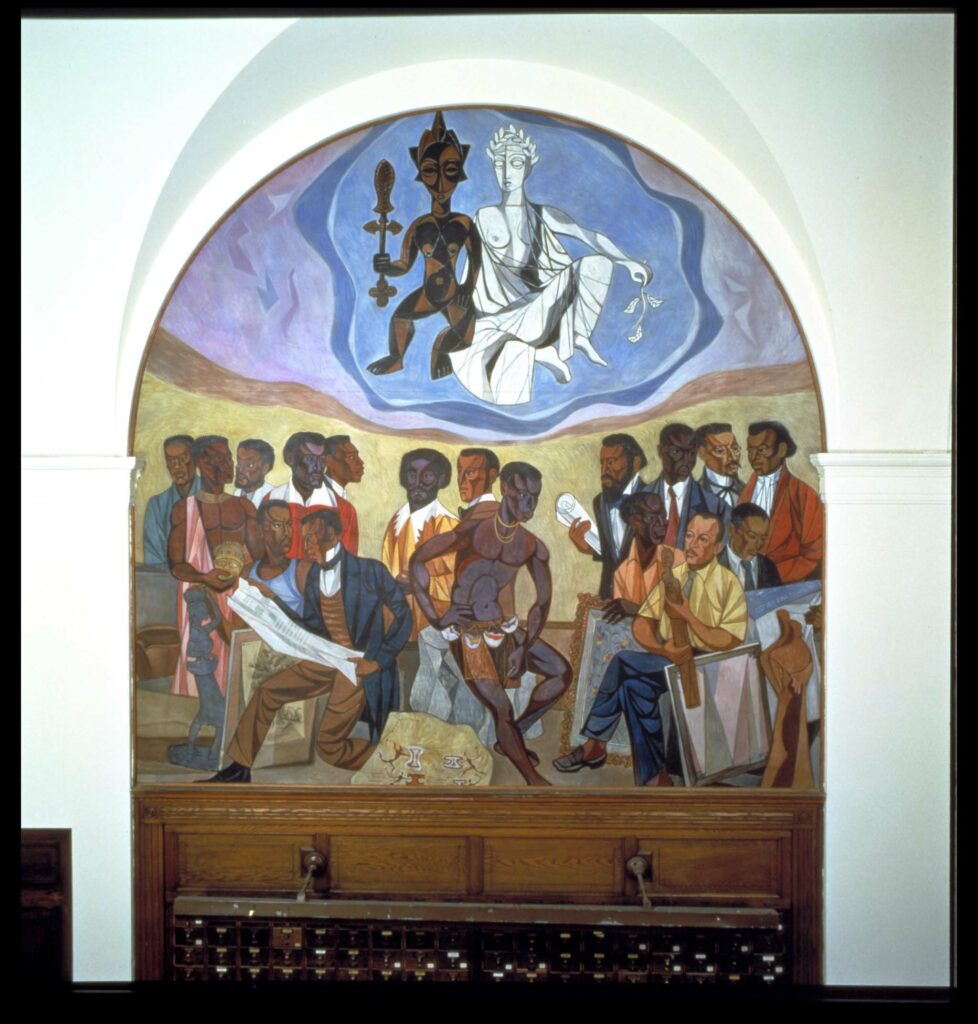
Courtesy of Clark Atlanta University Art Galleries
Referring to the influence of African art on the development of Western art, Woodruff stated: “This [the Art of the Negro mural] has to do with a kind of interpretive treatment of African art. . . . I’ve always had a high regard and respect for the African artist and his art. So this mural. . .is for me, a kind of token of my esteem for African art.” The six panels convey a synthesis of the art history of non-European worlds. Also apparent are the lessons learned from Rivera, but the impact of the art of Africa is manifest in this series.
In 1946 Woodruff moved to New York, where he taught at New York University until his retirement in 1968. Woodruff died in New York City on September 6, 1980, but his impact as a teacher in the Atlanta University Center is palpable in the work of his students.


